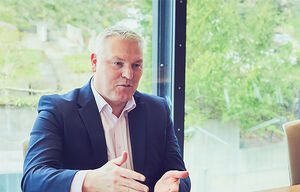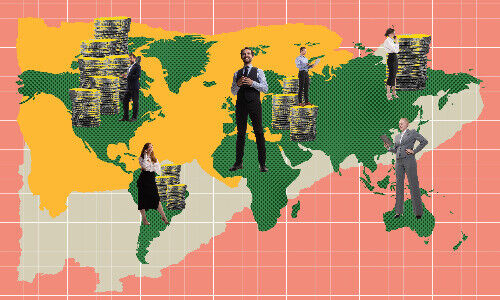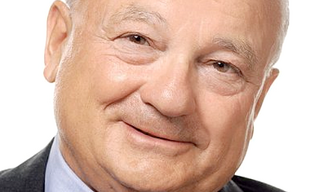Gold – How Asia Is Rewriting the Rules of Global Power
Gold has surged by almost 60 percent this year, outpacing most global assets and reigniting its role as the world’s ultimate store of value. But beyond the headlines, its rally tells a deeper story.
At the heart of this transformation is Asia. As China, India, and their BRICS+ partners build new trade routes, payment systems, and strategic reserves, they are redefining how the world’s wealth and influence are measured.
Gold has become both symbol and instrument of this new multipolar reality – a quiet revolution against decades of Western monetary dominance.
The Rise of the «Gold Bloc»
Emerging markets are no longer content to be passive participants in a dollar-centric world. Central banks from China, India, Russia, and Saudi Arabia are ramping up gold purchases, reducing exposure to US assets, and reinforcing their monetary independence.
According to Lombard Odier’s latest «Global CIO Viewpoint», these actions reflect a deliberate diversification away from the dollar, spurred by geopolitical frictions, sanctions risk, and the quest for financial sovereignty.
The trend marks the birth of a de facto «Gold Bloc» – nations that see tangible value in storing trust, not in paper, but in metal.
Asia’s Financial Independence Project
Nowhere is this transition more visible than in Asia. The BRICS+ nations – including China, India, and new entrants such as Saudi Arabia, the UAE, and Egypt – are building cross-border payment systems that allow transactions in local currencies.
These platforms, powered by distributed ledger technology, represent an alternative financial infrastructure that reduces dependence on the Western-controlled SWIFT network.
For now, the aim is not to dethrone the US dollar but to create resilience and autonomy. As trade flows tilt toward South–South corridors, Asia is emerging as the center of a new global liquidity network – one backed not by trust in a single nation, but by a shared belief in tangible reserves and self-determination.
Commodity Renaissance
Asia’s ascent is underpinned by more than monetary ambition – it is fuelled by commodities. Demand for rare earths, uranium, and energy resources continues to rise, driven by technology, electrification, and reindustrialization.
China dominates the refining of rare earths – critical for AI, defense, and clean energy – while Russia remains central to uranium enrichment. This new resource map gives Asia unprecedented leverage.
As Lombard Odier notes, emerging economies are turning their natural and technological assets into geopolitical capital, reshaping trade flows and value chains in the process.
Strategic Anchor
Gold’s ascent is not only a hedge against inflation or volatility – it is a vote of confidence in the emerging world’s future. With central bank reserves in gold still at only 18 percent of total holdings – about half their pre-Bretton Woods levels – there is ample room for accumulation.
Lombard Odier projects gold to reach $4,600 per ounce within 12 months, supported by structural buying from emerging central banks and investors seeking long-term security. In this new world order, gold is no longer just a safe haven – it is the cornerstone of a parallel financial architecture.
New Balance of Power
The post-war order built on Western-led institutions is fading. From the Asia-Pacific Economic Cooperation forum to the expanding BRICS+, new regional platforms are asserting alternative rules of engagement. In Asia, the message is consistent: prosperity must come with autonomy.
As the West wrestles with debt, deglobalization, and fiscal strain, Asia’s focus on tangible assets, fiscal discipline, and technological control is reshaping global investment logic. For investors, this signals a long-term overweight on emerging market assets, commodities, and gold – the very pillars of the new economic reality.
Return of Real Value
Gold’s rally is not just about metal – it is about meaning. In a fragmented, uncertain world, nations are once again turning to what they can touch, mine, and measure.
Asia’s rebalancing of power marks a profound economic and psychological shift – from abstract promises to physical assets, from paper to presence. And gold, as Lombard Odier’s CIOs conclude, is once again the mirror of the world order to come.




























